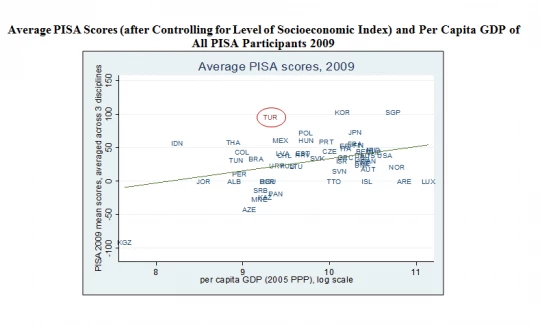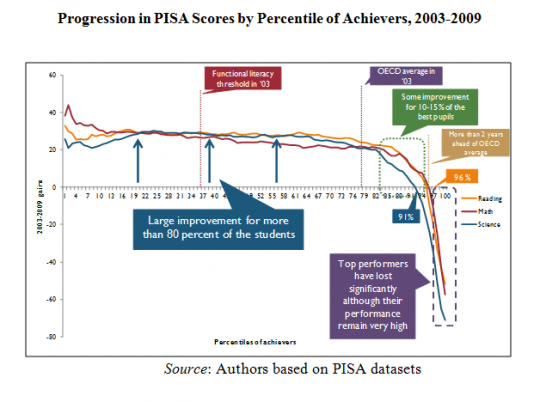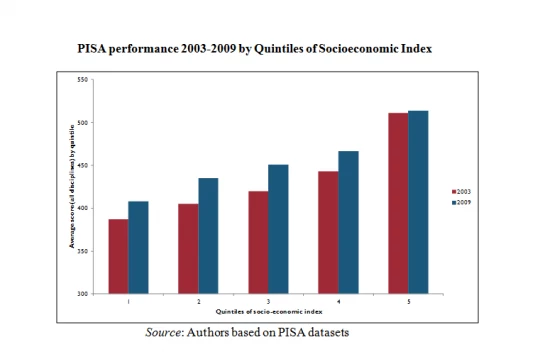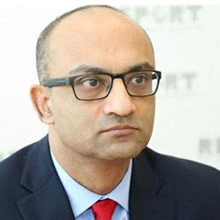Turkey’s remarkable economic growth over the last decade has been a much quoted success story. One often hears that the country trebled its per capita income, and has become the 16th largest economy in the world. One hears less often that this economic growth has been inclusive, accompanied by reduced poverty and expanded access to social services in health and education. And yet even these debates on expanded social services rarely move beyond quoting the headline numbers to look at the dynamics of change in the sector(s). This omission is unfortunate because the dynamics of change in the social sectors can be a harbinger for future progress. I want to draw the reader’s attention to the unheralded progress in the education sector.
Few issues are as controversial or hotly debated as education reform in Turkey. Most recently, controversy has surrounded the recent passage of the “4+4+4” law which has raised the number of years of compulsory education from 8 to 12 years. The new law implies revisiting the rules governing transitions from lower to upper secondary schools, the choice of curricula and schools available to students at different levels of education. Some controversies are as old as the republic, such as the role of religious education in the education system of a secular state, and these continue to generate much emotion, now within the context of the changes implied by the new law. Underpinning the latest incarnation of most of these controversies are differing views on the progress of the education sector in Turkey over the last decade.
Interestingly, the debate on education quality is short on empirics. The World Bank with Turkey’s Ministry of National Education, analyzed the latest PISA data for the country and found several interesting and encouraging results. In short, the system has expanded impressively, with net enrolment rate in secondary education jumping from under 50% in 2001-02 to over 67% now (girls enrolment has gone from 43% to over 66% in the same period), adding over 1.5 million students to the secondary school system. Data from PISA also tells us that this expansion has been accompanied by an overall improvement in PISA scores for 15 year olds of 20 points or more between 2003-2009 - equivalent to adding an additional half year of schooling to each student’s study period. Even more impressively, the improvement has come mostly from students from disadvantaged backgrounds. While a lot of work remains for the future, schools have become less segregated and inequality of access and educational performance had been reduced remarkably.
Our analysis finds that Turkey’s performance in PISA is higher than would be predicted, taking into consideration its level of economic development and income. At around 450, Turkey’s PISA scores in reading, math, and science are better than average, when its level of GDP per capita is taken into account. The average PISA score of Turkish students in 2009 was approximately 10 points above that predicted by its income level. This performance looks even more impressive once the socioeconomic level of students, as well as the level of per capita GDP, is taken into account. By factoring this in, Turkey achieves almost 70 PISA points above average. In fact, in these terms, Turkey’s performance is nearly the highest among the 65 participating countries, on par with Korea or Singapore.
The increasing quality of education accompanied by reduced inequality in student performance has contributed to Turkey’s comparatively strong results in PISA. The country’s scores in the three PISA disciplines (reading, math, and science) increased sharply by 20 points or more between 2003 and 2009. At the same time, inequalities in student performance have decreased as these gains in PISA scores have come overwhelmingly from low and medium performers. For example, the performance of the bottom 1 percent of the cohort has gone up by 30 points in reading, 33 points in math, and 25 points in science; the performance of high-achievers has, on average, also improved, although by less than that of the lower performers. During the same period, the enrollment rate of 15-year-olds has grown by a strong 7.8 percent per year according to PISA, which makes these improvements even more remarkable.
While improvements in educational outcomes have, in part, resulted from the general increase in living standards (hence better overall opportunities for the new generation), increased effectiveness in the delivery of education has also played a significant role. Thus, the socioeconomic status of each student’s family mattered less for his or her PISA results in 2009 than it did in 2003. Our analysis shows that PISA score for students in the lower socio-economic quintiles improved much more markedly than for students in the top quintile. This is because the delivery of education services has become more effective in the period between these PISA tests - improving the schooling provided to almost all Turkish students and thereby reducing inequalities.
Despite these successes, some challenges still remain. The performance of Turkey’s average 15-year-old is still one full year (or 40 PISA points) behind the OECD average and a student’s socio-economic background remains a far more important determinant of educational outcomes in Turkey, than it does in other OECD countries. Around 25 percent of the Turkish 15-year-olds do not read well enough to be able to analyze and understand what they are reading and are therefore considered by the OECD to be “functionally illiterate.” However, this rate has been declining at a fast pace since 2003, when the equivalent proportion was 36 percent. Results and data from the 2012 round of PISA are expected in December 2013, and will allow for a more detailed analysis of progress made since 2009. Continued analysis of educational performance data should help shed light on Turkey’s ongoing educational debates and will hopefully contribute to greater consensus on what policies are needed to help the country fully close the remaining gap to reach the standards of the world’s leading education performers like Korea, Singapore or Finland.
We discussed options for the future at a recent conference on education in Turkey that was jointly hosted by the World Bank and the Turkish Ministry of National Education. Will Turkey sustain or even accelerate recent gains and what measures might contribute most to this? I look forward to hearing your views online.
Also read this blog in Turkish.






Join the Conversation